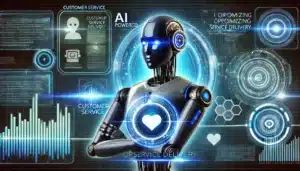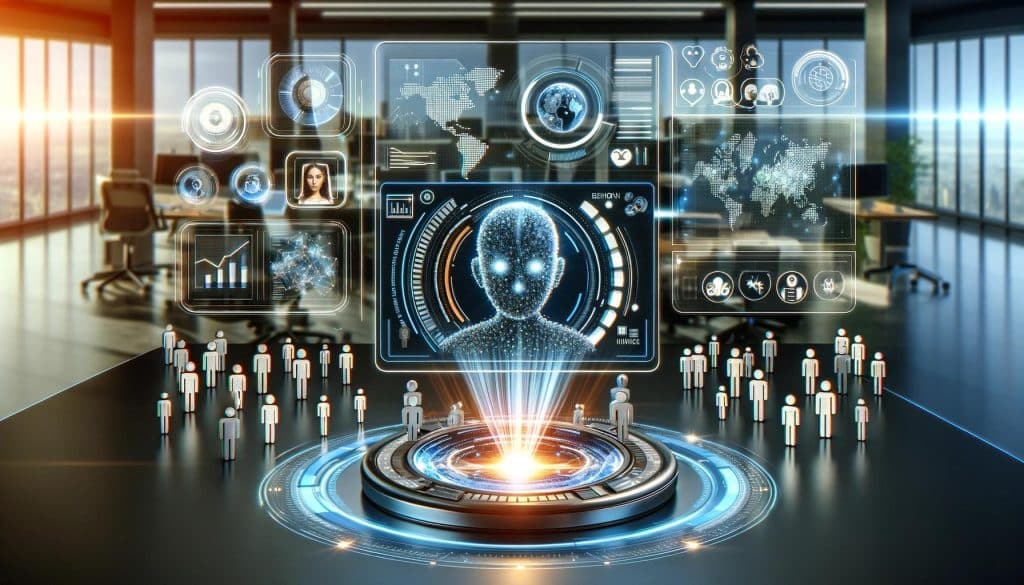In today’s fast-paced digital landscape, businesses are constantly seeking innovative solutions to enhance customer service and streamline operations. One of the most transformative technologies in this domain is the chatbot. These AI-powered chatbots are designed to improve customer interactions and provide efficient customer support, ultimately leading to higher customer satisfaction. This article explores the multifaceted role of chatbots in service delivery, illustrating how they can revolutionize customer service and business operations.
How Can Chatbots Improve Customer Service Delivery?
What are the benefits of using chatbots in customer service?
Chatbots have emerged as invaluable tools for businesses aiming to enhance customer service delivery. One of the primary benefits of using chatbots in customer service is their ability to provide immediate responses to customer inquiries. Unlike traditional customer support channels that may involve long wait times, chatbots can handle multiple customer queries simultaneously, ensuring that no customer is left waiting for assistance. This immediacy not only improves customer satisfaction but also enhances customer loyalty, as customers are more likely to return to brands that offer efficient service. Additionally, chatbots can operate round-the-clock, making them a vital resource for businesses that require 24/7 customer support.
How do chatbots enhance customer satisfaction?
The presence of chatbots in customer service significantly enhances customer satisfaction through personalized interactions. AI chatbots utilize customer data to tailor responses, making each interaction feel more relevant and engaging. This personalization fosters a positive customer experience, as customers feel valued and understood. Furthermore, chatbots can effectively manage customer expectations by providing real-time updates on order statuses, service availability, and more. When customers receive timely information and personalized experiences, their overall satisfaction increases, leading to improved customer retention and loyalty.
What role do AI chatbots play in service delivery?
AI chatbots play a pivotal role in modern service delivery by acting as the first point of contact for customer inquiries. These intelligent bots are capable of understanding natural language, allowing them to engage in meaningful conversations with customers. This capability not only streamlines service operations but also empowers customers to resolve their issues without the need for human intervention. The use of AI chatbots in service delivery enables businesses to allocate human resources to more complex tasks, thereby optimizing workforce productivity. Ultimately, AI chatbots contribute to a more efficient and responsive service delivery model, enhancing the overall customer experience.
What Are the Key Features of AI Chatbots for Customer Support?
What chatbot technology is most effective for businesses?
The effectiveness of chatbot technology varies across different business needs and customer interactions. However, the most effective chatbots for business are those powered by advanced AI algorithms that facilitate natural language processing (NLP). These chatbots can understand and respond to customer inquiries conversationally, making interactions feel more human-like. Additionally, AI-powered chatbots can learn from past interactions, continually improving their responses and becoming more efficient over time. Businesses should prioritize implementing chatbots that leverage the latest technologies to ensure they meet the evolving demands of their customers.
How can chatbots handle customer inquiries?
Chatbots can handle customer inquiries through a structured approach that involves multiple layers of data processing and response generation. Initially, when a customer initiates a conversation, the chatbot analyzes the input to identify keywords and context. Once the inquiry is understood, the chatbot retrieves relevant information from its database or knowledge base. Depending on the complexity of the query, chatbots can either provide a direct answer or escalate the issue to a human agent if necessary. This capability allows businesses to efficiently manage customer interactions while ensuring that customers receive accurate and timely information.
What features should businesses look for in a chatbot?
When selecting chatbots for customer service, businesses should consider several key features to maximize their effectiveness. Firstly, a user-friendly interface is essential, as it ensures that customers can easily interact with the chatbot. Additionally, the ability to integrate with existing customer relationship management (CRM) systems is crucial, as it allows chatbots to access customer data and history. Other important features include multilingual support to cater to diverse customer bases, the ability to handle multiple channels (such as social media and websites), and robust analytics capabilities to track performance and customer satisfaction metrics. By focusing on these features, businesses can implement chatbots that significantly enhance their customer support operations.

How Do Chatbots Streamline Business Operations?
In what ways do chatbots reduce operational costs?
Chatbots have a profound impact on reducing operational costs for businesses by automating routine tasks and inquiries. By implementing chatbots in customer service, organizations can minimize the need for large customer support teams. This reduction in manpower not only decreases labor costs but also limits the expenses associated with training and onboarding new employees. Furthermore, chatbots can handle a high volume of customer interactions simultaneously, which helps businesses scale their operations without corresponding increases in staffing costs. The efficiency brought about by chatbots ultimately contributes to a more sustainable business model.
How can chatbots improve customer interactions?
Chatbots significantly improve customer interactions by providing instant and accurate responses to customer queries. They are designed to understand and process customer requests in real-time, which enhances the overall service experience. Moreover, chatbots can engage customers in personalized conversations based on their previous interactions and preferences, making them feel valued. This level of engagement not only resolves issues more effectively but also fosters a sense of trust and reliability in the brand. By focusing on improving customer interactions, chatbots contribute to higher customer satisfaction and loyalty.
What impact do chatbots have on employee productivity?
By taking over routine tasks, chatbots free up human employees to focus on more complex and strategic responsibilities. This shift allows customer service representatives to dedicate their time and skills to addressing higher-level issues that require human empathy and problem-solving abilities. As a result, employee productivity is significantly enhanced, leading to a more motivated workforce. Additionally, with the support of chatbots, employees can manage their time more effectively, as they are no longer bogged down by repetitive inquiries. This balance ultimately contributes to a healthier work environment and improved employee morale.
How Can Businesses Leverage Chatbots for Customer Experience?
How do chatbots provide round-the-clock support?
One of the standout features of chatbots is their ability to provide round-the-clock support to customers. Unlike traditional customer service channels that operate within business hours, chatbots can engage with customers at any time of day or night. This 24/7 availability ensures that customer inquiries are addressed promptly, regardless of time zone differences or business hours. By leveraging chatbots for continuous support, businesses can enhance the customer experience and cater to a global audience, ultimately leading to improved customer satisfaction and loyalty.
What strategies can enhance customer engagement using chatbots?
To maximize customer engagement using chatbots, businesses should adopt several effective strategies. Firstly, incorporating interactive elements, such as quick replies and multimedia content, can make conversations more engaging and enjoyable for users. Additionally, businesses should regularly update their chatbots with new information and features to keep interactions fresh and relevant. Implementing proactive engagement tactics, such as sending reminders or personalized offers, can also foster deeper connections with customers. By prioritizing these strategies, businesses can leverage chatbots to create meaningful customer experiences that drive engagement and satisfaction.
How can businesses use customer data to improve chatbot interactions?
Utilizing customer data effectively is vital for improving chatbot interactions. By analyzing customer interactions and preferences, businesses can identify patterns and tailor chatbot responses to meet specific needs. This data-driven approach allows businesses to refine their chatbots continuously, enhancing their performance and relevance. Moreover, understanding customer behavior enables businesses to anticipate inquiries and provide proactive support. By leveraging customer data, chatbots can evolve into more sophisticated tools that deliver personalized and efficient service, significantly enhancing the overall customer experience.
What Challenges Do Companies Face When Implementing Chatbots?
What common misconceptions exist about chatbot technology?
Despite the many advantages of chatbots, several misconceptions can hinder their implementation in businesses. One common misconception is that chatbots can completely replace human agents. While chatbots are highly efficient in managing routine inquiries, they lack the emotional intelligence and empathy that human agents provide. Another misconception is that chatbots are inflexible and cannot handle complex queries. In reality, modern AI chatbots are designed to learn and adapt over time, making them increasingly capable of managing a wide range of customer interactions. Addressing these misconceptions is crucial for businesses to embrace chatbot technology effectively.
How can businesses overcome resistance to using chatbots?
Overcoming resistance to using chatbots requires a strategic approach that emphasizes the benefits of automation and AI technology. Businesses should start by educating employees about the capabilities and advantages of chatbots, showcasing how they can enhance customer service rather than replace jobs. Providing training sessions and resources can help employees feel more confident in using chatbots as part of their workflow. Additionally, involving employees in the implementation process can foster a sense of ownership and acceptance of the new technology. By addressing concerns and demonstrating the value of chatbots, businesses can facilitate a smoother transition to automated customer support.
What are the potential pitfalls of using chatbots in customer service?
While chatbots can greatly enhance customer service, there are potential pitfalls that businesses should be aware of when implementing this technology. One notable pitfall is the risk of providing inadequate responses to customer inquiries. If chatbots are not properly trained or updated, they may deliver incorrect or irrelevant information, leading to customer frustration. Additionally, over-reliance on chatbots can create a disconnect between customers and the brand, especially if human support is not readily available for more complex issues. To mitigate these risks, businesses need to ensure that their chatbots are continuously monitored, updated, and integrated with human support to provide a seamless service experience.



